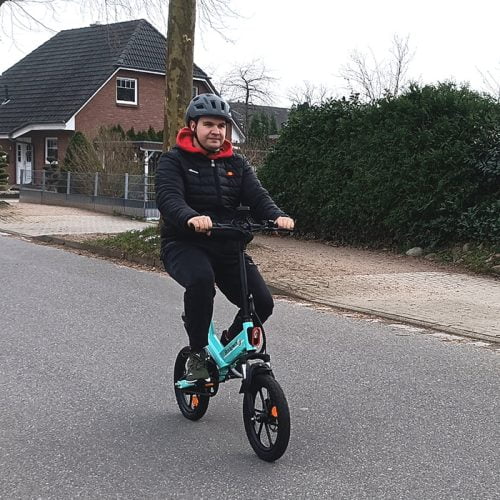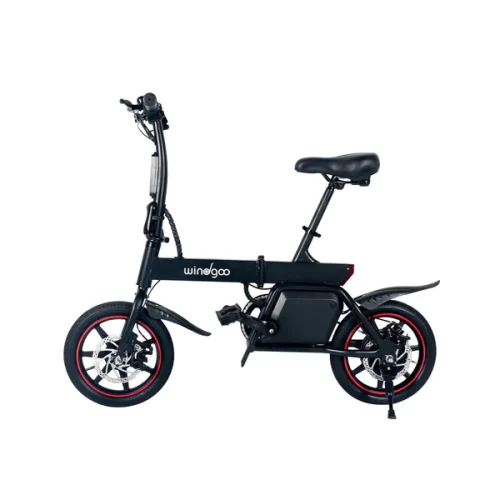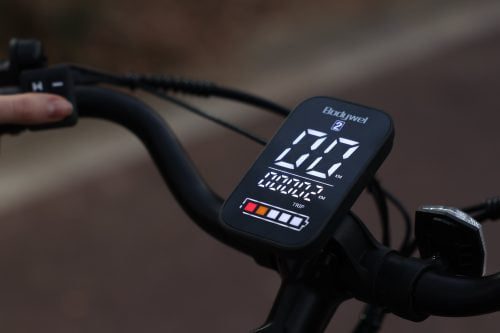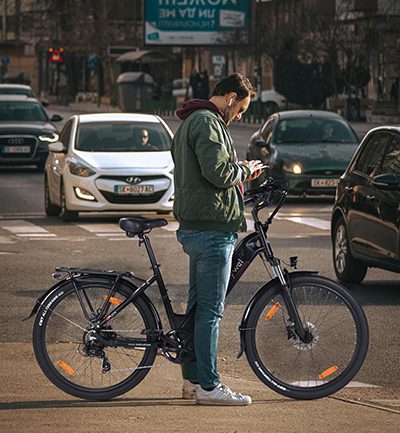In a world where the concrete jungle expands with relentless pace, the search for the ideal steed to navigate its complex pathways intensifies, making electric bikes (ebikes) a growing favorite. Within this burgeoning market, the Bodywel T16 and Windgoo B20 emerge as notable contenders, each promising to serve the dynamic demands of the modern city dweller. This comparative examination will probe the nuances of these two ebikes, revealing how their design and performance may sway urban commuters in their decision-making.
| Feature | Bodywel T16 | Windgoo B20 |
|---|---|---|
| Design | Semi foldable | Fully foldable |
| Motor Power | 250W | 250W |
| Torque | 35Nm | 10Nm |
| Battery | 36V 10.4AH | 36V 6AH |
| Max Speed | 25KM/H | 25KM/H |
| Payload Capacity | 120 KG | 120 KG |
| Weight | 25 kg | 19 kg |
| Tires | 16 x 2.15 inch | 14 x 1.95 inch |
| Price | £/€549 | £479/€499 |
| Range | Max 70KM with PAS | Max 25 KM |
| Suspension | Front Suspension | No |
| Display | LED | LCD |
Design and Folding Mechanism
A discerning eye quickly notes a pivotal difference between the Bodywel T16 and Windgoo B20: their folding mechanisms. Such variations in design philosophy highlight the diverse aesthetic and functional preferences steering ebike production.

Windgoo Mini E Bike B20
The Bodywel T16, with a semi-foldable frame, offers a compromise between rigidity and portability, likely attracting those who occasionally need to stow their bike but prioritize a solid ride. Conversely, the Windgoo B20 boasts a fully foldable design, beckoning those for whom space-saving is paramount—ideal for urbanites with limited storage or multi-modal commuters.
Rider Experience and Ergonomics
When it comes to the aspect of comfort, which is paramount for any rider, both the Bodywel T16 and Windgoo B20 electric bikes adopt contrasting design principles. In terms of load-bearing capacity, both ebikes can support a maximum weight of 120 kg, making them also accommodating for individuals with larger body types.
Size-wise, the Bodywel T16 features 16-inch wheels and an the option for an extended seat post, providing convenience for riders with heights ranging from 160-200 cm. This design caters to the comfort and ergonomic needs of various rider statures. The Windgoo B20’s 14-inch wheels, on the other hand, make for a more compact design. It is well-suited for individuals between 150-175 cm tall, but taller riders and those with larger builds may find it somewhat cramped. Additionally, the T16’s wider tires offer a more stable assurance when dealing with bumpy and muddy terrain.

Bodywel T16
In terms of shock absorption, the Bodywel T16 is equipped with a triple-layer suspension system. Consisting of front suspension, seat suspension, and mid-frame suspension, this system significantly reduces discomfort from bumpy roads and the strain of long-duration rides.
In stark contrast, the Windgoo B20 lacks a suspension system, relying only on basic seat cushioning. While such a setup might be comfortable on smooth terrain, it may prove inadequate on uneven surfaces, potentially compromising the bike’s tolerance for bumps and leading to discomfort in the arms and buttocks.
Performance and Range
In evaluating the performance credentials of the Bodywel T16 and Windgoo B20, we uncover attributes that cater to different commuting preferences and requirements.
The Bodywel T16 distinguishes itself with a robust torque output of 35Nm, a figure that speaks to its capability to conquer challenging inclines and facilitate quick starts at intersections with a sense of urgency. Coupled with a substantial range of up to 70 kilometers per charge when using the Pedal Assist System, the T16 is an exemplary choice for those whose journeys stretch beyond the confines of the city core or who regularly traverse areas with a dynamic landscape. The generous range ensures that commuters can embark on their day’s travels with the assurance that the battery life will sustain them throughout.
Conversely, the Windgoo B20 offers a more modest maximum range of 25 kilometers, positioning it as an adept urban companion for shorter commutes. This range is ample for navigating the tight web of inner-city streets or for completing the final leg of a multi-modal commute. It’s a practical solution for riders whose primary use will be the hustle and bustle of urban life, with the expectation of regular charging between uses.

Windgoo B20
Both ebikes are powered by a 250W motor, laying a common foundation for their electrical propulsion. Though Windgoo B20 doesn’t show its torque, the torque of the Bodywel T16 not only affords it greater agility when dealing with varied terrains but also enhances the rider’s experience by providing smoother and more responsive power delivery. For riders who frequently encounter hilly routes or who appreciate the ability to accelerate with alacrity, the T16’s torque can be a significant advantage. In urban environments where stop-and-go traffic is the norm, this ebike’s capacity for rapid acceleration can make navigating traffic more effective, offering the rider both a performance edge and an enhanced sense of control.
Practical Use
Both brands of bicycles feature the capability to monitor ride conditions and e-bike status via an app, which is exceedingly convenient for those who wish to stay informed about their cycling and fitness activities in real-time.
However, when it comes to the display, the Bodywel T16 has a superior advantage with its LED screen. The LED display of the Bodywel T16 offers clear and immediate access to riding data, allowing riders to quickly ascertain their speed and battery levels. In the event of a malfunction, riders can initially diagnose the issue through fault codes displayed on the screen. In contrast, the Windgoo B20’s LCD provides only battery level information, which might necessitate additional effort from the rider to discern details and troubleshoot issues during a trip. Furthermore, due to differences in display technology, the LED screen is more visible than the LCD in well-lit outdoor conditions and offers better visual clarity at night.

Bodywel LED Screen
Price Comparison
Affordability is a key factor, and in this regard, the Windgoo B20 slightly edges out with its lower price point. However, the Bodywel T16 defends its higher cost with a longer range, greater payload capacity, and a front suspension system—investments in comfort and performance that may be worthwhile for certain riders.
On the official websites of the two brands, the Windgoo B20 is currently out of stock in the UK and is only available to European consumers. Its normal price is 569.99 euros, but it’s currently on sale for just 499 euros during a promotional event.
The Bodywel T16 is usually priced at 699 pounds/euros, but the current promotional price is 549 pounds/euros. Additionally, new users can apply a 10% discount code, bringing the final price down to only 494 pounds/euros, making it a more economical choice compared to the Windgoo B20 when all factors are considered.
Selecting Your Steed
Deciding between the Bodywel T16 and Windgoo B20 boils down to personal preferences and practical needs. Each ebike reflects a unique persona that caters to different facets of urban life. Contemplate what’s pivotal for you—ease of storage, riding comfort, or range—and let those priorities guide your choice. Whether the features of the Bodywel T16 align with your daily journey or the Windgoo B20’s simplicity and portability resonate more, each stands as a reliable ally in your metropolitan adventures.
While the initial glance at pricing might suggest the Windgoo B20 as the more cost-effective option, a deeper dive into the comprehensive offerings and capabilities of each bike reveals a different narrative. When considering the full spectrum of features, performance, and the current promotional offers, the Bodywel T16 and Windgoo B20 are positioned much closer in price than one might initially assume. However, the T16 emerges as the superior choice in terms of configuration and performance, offering a longer range, higher torque for better acceleration and hill climbing, wider tires for improved stability on varied terrains, and a more advanced suspension system for enhanced comfort during longer rides. Coupled with its LED display for easier navigation and fault diagnosis, the Bodywel T16 justifies its price point, presenting itself as a compelling option for those seeking a robust, comfortable, and versatile urban ebike. Ultimately, for riders prioritizing a comprehensive and superior riding experience, the Bodywel T16 stands out as the more advantageous investment, providing significant value for a marginally higher or comparable price.


